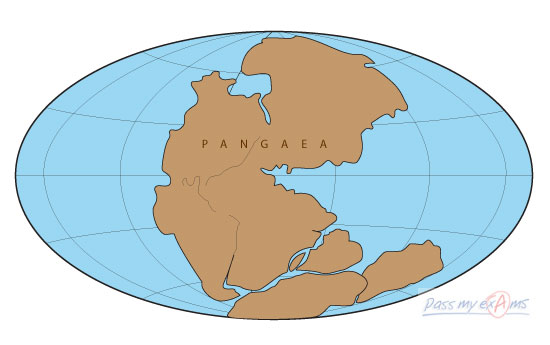Alfred Lothar Wegener
Alfred Lothar Wegener was born in Berlin, Germany, on the 1st of November 1880. He received his doctorate (PHD) in astronomy at the University of Berlin in 1905. During his studies he developed a great interest in meteorology (the study of atmospheric condition and weather) and climatology (the study of weather conditions over extended periods of time).
In 1910 Wegener wrote a letter to his wife commenting on how the East Coast of South America fitted against the West Coast of Africa as if they had once been joined together. The following year whilst working as a tutor at the University of Malburg he came across a scientific paper describing fossils of identical animals and plants discovered on opposites sides of the Atlantic oceans. This triggered an interest for Wegener who then found many other cases of fossils of the same organisms being found on either side of the great oceans. The scientific explanation of time was that the continents were connected by land bridges that had sunken over the passage of time. Wegener however, felt this fossil evidence supported his theory that the continents at one time must have been joined together and then drifted apart.
Continental Drift and mountain building
Wegener put forward his theory of continental drift in 1912 stating that the continents were once joined together and were drifting apart dismissing the theory of connecting land bridges. In 1915 he published his findings in a book titled, The Origins of Continents and Oceans. In this Wegener put forth his explanation for the formation of mountain ranges. Wegener noticed that mountain ranges occurred as narrow bands predominantly at the edge of continents. He thus concluded these are formed when the edge of drifting continents crumpled and folded when they collided with other continents as was the case for Himalayas, forming when India collided with Asia. This challenged the cooling, contracting theory accepted at the time according to which mountains form on the Earth’s crust in a similar way as wrinkles form on the skin of a drying apple.
Pangaea
By 1922 Wegener put forward his theory of a supercontinent. Using geological evidences Wegener proposed that approximately 300 million years ago all the continents were joined as a supercontinent. Wegener named this supercontinent Pangaea (all lands). About 200 million years ago the supercontinent began to break up and the small continents moved to their present day positions.

Limited explanation and the hostile response
Wegener proposed that the continents floated in a similar way to icebergs on water. Wegener’s explanation was that the continents were mainly made up of granite a less dense rock compared to the basalt that makes up the sea floor. It is this density difference which allows the continents to drift and float, break apart and converge. Wegener proposed the forces responsible for continental drift were due to centrifugal force of the rotating Earth and the gravitational pull from the sun and the moon.
Wegener's theory was harshly rejected by most scientists at the time. This was mainly due to Wegener’s limited explanation as to the mechanisms responsible for moving the continents. Furthermore, the scientist argued that if the continents ploughed through the earth’s crust they would be distorted beyond recognition and that the centrifugal force could not be mathematically calculated to be large enough to force continents to move. Other rejections were not even based on scientific facts, but on the trivial reason that Wegener with his astronomy and meteorology background was an outsider attacking the theories well established by the geologist community.
Continental Drift to Plate Tectonics
Alfred Wegener passed away in 1930 at the age of 50 during an expedition to Greenland. His theory found more scattered support after his death, but was still rejected by most geologist. It was not until the 1950’s when increased exploration of the Earth’s crust in particular the ocean floors was undertaken that Wegener’s theory was revived. By the late 1960’s plate tectonics scientifically explained the movement of the continental plates. This confirmed Wegner’s theory of continental drift but also pointed out the shortcomings in Wegener’s theory most notably that both continents and ocean floors make up solid plates which move and it is not only the continents as Wegener had suggested. Secondly, that the plates float on a molten layer of rock and they are driven along by the convection currents in the mantle.
